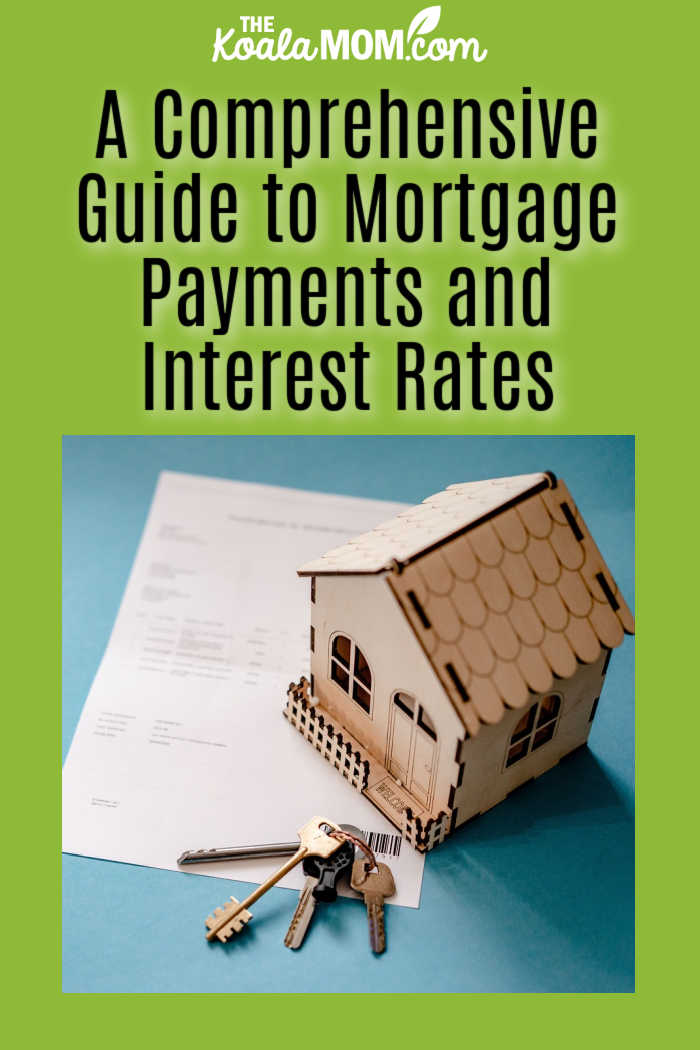Are you ready to embark on the exciting journey of homeownership? Whether you’re a first-time buyer or a seasoned real estate enthusiast, understanding the intricacies of mortgage payments and interest rates is absolutely crucial. Imagine this guide as your trusty map through the labyrinth of home financing, helping you navigate the twists and turns with confidence.
We’re about to unravel the mysteries of mortgages, demystify the enigma of interest rates, and equip you with the knowledge to make informed decisions that can save you thousands of dollars over the life of your loan. So, fasten your seatbelt, because we’re about to dive deep into the world of mortgage payments and interest rates.

Mortgage Payments: An Overview
Mortgage payments are regular (typically monthly) installments made by homeowners to repay their home loans. These payments encompass both principal and interest, with the principal amount chipping away at the initial loan balance, and the interest representing the cost of borrowing.
For instance, you can find the current NZ mortgage interest rates to help you estimate your potential monthly mortgage payments, plan your budget, and make informed decisions about the affordability of a home purchase.
Together, mortgage payments ensure the gradual reduction of the debt over the loan term. The exact composition of each payment varies over time, with early payments primarily covering interest and later ones focusing more on principal. Understanding mortgage payments is essential for homeowners, as it allows them to budget effectively and make informed financial decisions related to their homes and investments.
The Role of Interest Rates in Mortgages
Interest rates play a pivotal role in the world of mortgages. They directly impact the cost of borrowing and, consequently, the overall affordability of a home. When applying for a mortgage, borrowers are offered an interest rate, which can be fixed or adjustable.
A lower interest rate can lead to lower monthly payments and less interest paid over the life of the loan, while a higher rate has the opposite effect. Understanding how interest rates are determined, including the influence of economic factors and creditworthiness, is crucial for prospective homebuyers seeking the best mortgage terms and long-term financial stability.
Fixed vs. Adjustable Rate Mortgages
Choosing between fixed-rate and adjustable-rate mortgages (ARMs) is a fundamental decision for homebuyers. A fixed-rate mortgage offers stability, with an interest rate that remains constant throughout the loan term (usually 1-5 years). This predictability simplifies budgeting but may result in higher initial rates.
In contrast, ARMs feature interest rates that can change periodically, usually after an initial fixed period. While they typically start with lower rates, they can increase over time, introducing uncertainty into monthly payments.
Deciding between the two depends on factors like risk tolerance, financial goals, and market conditions. Fixed-rate mortgages provide security, while ARMs offer potential savings initially but require careful consideration of future rate adjustments.
Factors Influencing Mortgage Interest Rates
Mortgage interest rates are influenced by a complex interplay of economic, financial, and individual elements. The broader economic landscape, including inflation, economic growth, and central bank policies, impacts overall interest rate trends. Lender-specific factors like operational costs and risk assessment also play a role.
Additionally, borrower characteristics such as credit score, down payment, and loan amount affect the rate offered. Market conditions, geopolitical events, and even global economic shifts contribute to rate fluctuations. Understanding these multifaceted influences empowers borrowers to make informed decisions, capitalize on favorable market conditions, and secure the most advantageous mortgage rates.
There may also be personal factors that affect mortgage interest rates. If the lender considers you a “high risk borrower,” then they may offer you a mortgage at a higher interest rate than other borrows can qualify for. Factors that may affect your borrowing power include self-employment, separation / divorce, and the type of property you are buying.
It’s a good idea to speak to a mortgage broker about current interest rates and your options. A good broker can advise you about the best options for your mortgage based on your finances, and help you decide between the various options available to you. Brokers have access to various lenders and can help you get the best rate and term possible to help you purchase your home.
Strategies for Managing Mortgage Payments
Effectively managing mortgage payments is essential for long-term financial stability. One strategy is making extra payments, reducing the principal faster, and saving on interest costs. Refinancing can be another option, especially when interest rates are lower, potentially lowering monthly payments. Creating a budget that considers other financial goals alongside mortgage payments ensures fiscal balance.
Setting up automatic payments can prevent late fees and improve credit scores. In times of financial hardship, contacting the lender to discuss forbearance or loan modification can provide temporary relief. Overall, a proactive approach to managing mortgage payments helps homeowners build equity, save money, and maintain financial security.
The Impact of Amortization on Mortgage Payments
Amortization is a crucial aspect of mortgage payments that affects how borrowers build home equity. Mortgage loans are typically structured so that early payments primarily cover interest, with a smaller portion going towards the principal. As the loan matures, this allocation reverses, with more funds applied to principal reduction.
Understanding amortization schedules is vital because they dictate how equity accumulates. By making additional payments towards the principal or opting for shorter loan terms, homeowners can expedite equity growth and reduce the total interest paid. Comprehending the dynamics of amortization enables borrowers to make informed decisions that align with their financial goals and enhance their long-term financial well-being.

Navigating the world of mortgage payments and interest rates is a critical aspect of finding your dream home and financial planning. Understanding the components of mortgage payments, the influence of interest rates, and the impact of amortization empowers individuals to make informed decisions.
Whether choosing between fixed or adjustable rates, managing payments effectively, or exploring strategies to build equity, knowledge is key to achieving financial stability and achieving homeownership goals. By mastering these concepts, borrowers can navigate the mortgage landscape with confidence and make sound financial choices for the future.

No Responses Yet